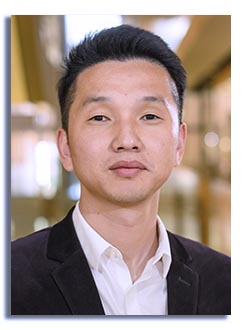
Abstract
Nanometer-sized colloidal metal halide perovskite semiconductors have emerged and brought unique opportunities for photovoltaic applications due to the high defect tolerance of perovskite and many features that emerge at the nanoscale. Perovskite quantum dots (QDs) or more broadly, nanocrystals (NCs), show high photoluminescence (PL) quantum yields, spectrally tunable bandgap, flexible compositional control, and crystalline strain benefits. Metal halide perovskite nanocrystals are readily synthesized with exceptional optoelectronic quality opening a route for next generation light emitters, as well as exploring LHP physics at the nanoscale. CsPbX3 (X=Cl-, Br-, I-, or mixed halide) QDs exhibit PL tunable from ultraviolet to near-infrared wavelengths by adjusting the halide composition and/or QD size.
In 2016, CsPbI3 QDs also became a point of interest in PV research. Currently CsPbI3 holds the record efficiency for QD solar cells (16.6%) proving better than any previous QD material composition. This talk will highlight the unique potential of perovskite QD (PQD) solar cells, from synthesis to devices. We will discuss current state of the art and lay out many open opportunities in perovskite QD solar cells, and the related present and future pursuits in QD preparation and device architecture.
Click here to see all available video seminars.
Click here to go to the SPREE HOMEPAGE.
Brief Bio
Dr. Jianyu Yuan is currently an Associate Professor at Institute of Functional Nano and Soft Materials (FUNSOM) at Soochow University. He obtained his Ph.D. degree from FUNSOM under the advisement of Prof. Wanli Ma in 2016, focusing on organic photovoltaic research. During his PhD study (2014-2015), he also worked at University of California, Santa Barbara (UCSB) as a joint PhD student with Prof. Guillermo C. Bazan for semiconducting polymer research. After graduation he became an Associate Professor at FUNSOM. In the summer of 2018, he is a visiting professor at National Renewable Energy Laboratory (NREL) with Dr. Joseph M. Luther for perovskite quantum dot solar cell research.
His research interests include design and synthesis of conjugated polymers, quantum dot for photovoltaic application. He has published ~80 peer-reviewed publications in prestigious journals like Joule, Adv. Mater., Adv. Energy Mater., Adv. Funct. Mater., ACS Nano, Nano Energy, Chem. Mater. etc., and 6 Chinese patents. His publications have received over 2000 citations with an H-index of 25.
